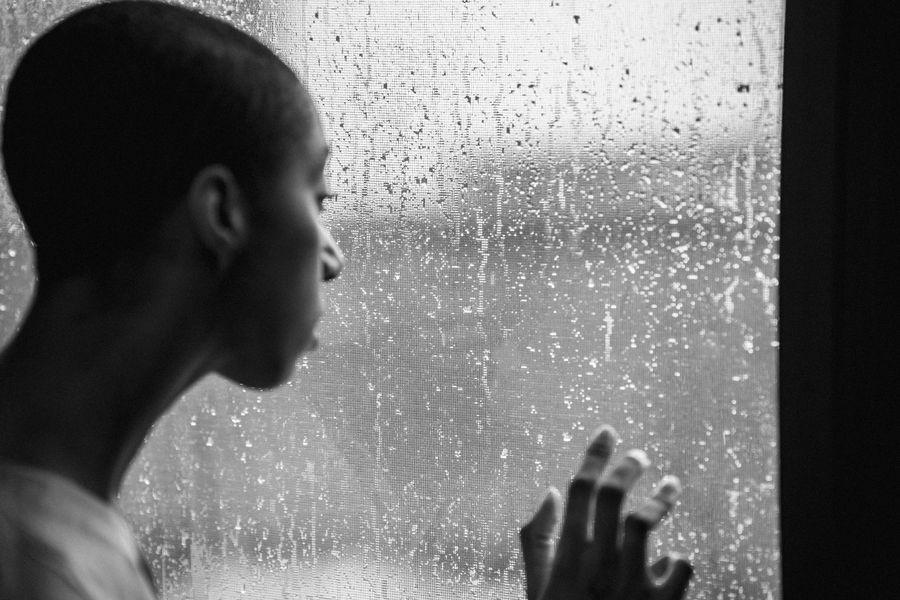Understanding Dismissive-Avoidant Attachment: Why Some People Struggle with Emotional Intimacy
Do you struggle to connect with others emotionally? Do you find yourself shutting down when someone tries to get close to you?
If so, you may be experiencing dismissive-avoidant attachment, one of the four primary attachment styles identified by psychologists. In this article, we’ll explore what dismissive-avoidant attachment is, its causes, and how it affects our relationships.
We’ll also discuss some strategies for working through this attachment style and building healthier connections with others. What Is Dismissive-Avoidant Attachment?
Dismissive-avoidant attachment is a psychological term used to describe individuals who tend to avoid emotional intimacy or connection with others. People with this attachment style generally have a negative view of relationships and a strong sense of self-reliance and independence.
They may believe that they don’t need others in their lives and often distance themselves emotionally from others. Individuals with dismissive-avoidant attachment may have a history of childhood neglect or emotional unavailability from caregivers, which led them to develop a self-sufficient mindset and a preference for keeping their distance from others.
They may also have experienced abandonment or rejection in their past, leading to a fear of getting close to others.
Causes of Dismissive-Avoidant Attachment
Caregiver Neglect
Neglect and emotional unavailability from caregivers can lead to dismissive-avoidant attachment. If a child’s emotional needs are not met consistently or if they are ignored when trying to connect with their caregivers, the child may learn to suppress their emotions and rely on themselves for comfort.
This can lead to a preference for self-sufficiency and a lack of trust in others.
Abandonment or Rejection
Experiencing abandonment or rejection can also lead to dismissive-avoidant attachment. If someone has been hurt by others in the past, they may fear getting close to others out of a fear of being hurt again.
This can lead to emotional distance and a preference for independence.
Personal Trauma
People who have experienced personal trauma, such as physical or emotional abuse, may develop a dismissive-avoidant attachment style as a way to cope with their pain. They may distance themselves emotionally from others to protect themselves from further harm and may struggle to form close relationships.
Overdependence on Self
Some individuals may develop a dismissive-avoidant attachment style simply because of their temperament. They may naturally lean towards independence and self-reliance and prefer to take care of themselves rather than relying on others.
Social and Cultural Norms
Finally, social and cultural norms can also play a role in developing dismissive-avoidant attachment. In some cultures, emotional distance and self-reliance are valued over emotional intimacy and vulnerability.
People may learn to suppress their emotions and keep their distance from others as a result of these societal pressures.
Effects of Dismissive-Avoidant Attachment on Relationships
Dismissive-avoidant attachment can have a significant impact on relationships. People with this attachment style may struggle to form close bonds with others, leading to feelings of loneliness and isolation.
They may also have difficulty expressing their emotions to others, leading to misunderstandings and a lack of intimacy in their relationships. Those with dismissive-avoidant attachment may also struggle with commitment in their romantic relationships.
They may fear getting too close to someone and often prioritize their own independence over maintaining a close connection with their partner.
Tips for Working Through Dismissive-Avoidant Attachment
If you recognize that you may have dismissive-avoidant attachment patterns, there are steps you can take to work through these tendencies and build healthier relationships with others.
- Practice vulnerability. One of the key elements of overcoming dismissive-avoidant attachment is learning to be vulnerable with others.
- Take baby steps. Learning to be vulnerable with others can be a gradual process.
- Work with a therapist. Working with a therapist can provide a safe and supportive space to explore your attachment style and develop healthy coping strategies for building better connections with others.
- Be patient with yourself.
Overcoming dismissive-avoidant attachment patterns can take time. Be patient with yourself and your progress.
Recognize that changing these deep-seated patterns is a process, and it may take time before you see significant changes in your relationships.
In Conclusion
Dismissive-avoidant attachment can be a challenging pattern to deal with, but it is possible to overcome. With a willingness to be vulnerable and a commitment to building stronger connections with others, you can work through these patterns and develop healthier, happier relationships.
Remember to be patient with yourself and seek support when needed; changing attachment patterns is a journey, not a destination.
10 Common Signs of Dismissive-Avoidant Attachment and How to Overcome Them
Dismissive-avoidant attachment can be a challenging pattern to deal with, and it can manifest in various ways in our relationships. Here are ten common signs of dismissive-avoidant attachment and strategies for overcoming them.
- Independence
- Avoidance of Emotions
- Discomfort with Vulnerability
- Difficulty with Commitment
- Limited Expression of Affection
- Focus on Logic Over Emotions
- Minimal Sharing of Personal Information
- Avoidance of Conflict
- Disregard for the Opinions of Others
- Fear of Intimacy
In Conclusion
Dismissive-avoidant attachment can manifest in various ways in our relationships, but there are strategies for overcoming its negative effects. By embracing vulnerability and emotional intimacy, asking for help, and being open to feedback, we can create deeper, more meaningful connections with others.
Remember, overcoming dismissive-avoidant attachment is a process that takes time and effort, but it is possible with patience and persistence. Can a Dismissive-Avoidant Fall in Love, and Is the Attachment Style Toxic?
Dismissive-avoidant attachment can have a significant impact on our relationships. It can be challenging for people with this attachment style to form intimate relationships, leading to feelings of loneliness and disconnection.
In this article, we’ll delve into whether a dismissive-avoidant can genuinely fall in love and whether this attachment style is toxic in relationships.
Dismissive-Avoidant Attachment in Relationships
Dismissive-avoidant attachment can make it challenging to establish emotional intimacy in a relationship. Because individuals with this attachment style prioritize independence and self-sufficiency, they often keep their partners at arm’s length, failing to let them in on their emotional and personal lives.
This attachment style may give the impression of a “lone wolf,” but dismissing the role of emotional connection in a healthy relationship can lead to a profound emotional and physical disconnect. Challenges of Dismissive-Avoidant Attachment in Relationships
The challenges of dismissive-avoidant attachment in relationships are numerous. The focus on independence can lead to emotional distance, creating a barrier between two individuals who desire a meaningful connection.
The fear of opening up and being vulnerable creates a barrier to emotional intimacy and can prevent successful growth and development in the relationship. Furthermore, the commitment itself may be challenging for individuals with dismissive-avoidant attachment.
The fear of being too reliant on their partner or the fear of losing their sense of independence inspires short-term relationships.
Importance of Recognizing Attachment Patterns and Developing a More Secure Attachment Style
It is essential to recognize the patterns of our attachment style and work on developing a more secure attachment style. A secure attachment style allows individuals to develop healthier relationships, allowing for emotional intimacy while still maintaining a sense of independence.
It takes time and work to develop a more secure attachment style, but it is possible with self-reflection, open communication, and a willingness to invest in emotional growth and development. Is the Dismissive-Avoidant Attachment Style Toxic?
Dismissive-avoidant attachment style is one of the four primary attachment styles identified by psychologists. Each style has its own unique set of strengths and limitations.
However, dismissing the importance of emotional intimacy can be toxic for relationships. Without emotional connection, there is a profound emotional and physical disconnect that inevitably leads to an unhappy relationship.
Challenges of Dismissive-Avoidant Attachment Style in Relationships
Dismissive-avoidant attachment style in relationships creates several challenges that can impact the well-being of the people involved. It can lead to emotional neglect, putting the person with whom you are involved in emotional distress.
Additionally, individuals with this attachment style may lack empathy or understanding, making it difficult to have healthy communication with their partner.
Importance of Recognizing Attachment Patterns and Working on Developing a More Secure Attachment Style
Recognizing our attachment patterns and working on developing a more secure attachment style is essential for healthy relationships. People can develop secure attachment styles which are characterised by open communication, healthy emotional expression, and a willingness to invest in the growth and development of the relationship.
A focus on emotional intimacy will improve the overall well-being of both partners and lead to a more loving and fulfilling relationship. Can a Dismissive-Avoidant Fall in Love?
The answer to whether a dismissive-avoidant can fall in love is yes, they can. It is important to recognise that the process may be slower, more guarded and cautious.
This is because people with this attachment style may struggle to connect emotionally, they may not feel comfortable showing their vulnerability and emotions in a way that someone who has a secure attachment style would. Recognising this and communicating openly is key to overcoming any potential hurdles.
Final Thoughts
Dismissive-avoidant attachment can make it challenging to form intimate relationships, but it is not impossible. By recognizing attachment patterns and working on developing a more secure attachment style, individuals can improve their relationships and create meaningful connections with partners.
With the right mindset and approach, anyone can learn to develop healthier relationships, allowing emotional intimacy and independence to thrive.
The Importance of Overcoming Dismissive-Avoidant Attachment and Building Healthier Relationships
Dismissive-avoidant attachment can present significant challenges in developing intimate and lasting emotional bonds with others. However, it is crucial to recognize that it is possible to overcome this attachment style and create healthier and more fulfilling relationships.
In this article, we’ll discuss the challenges of dismissive-avoidant attachment in relationships, the importance of recognizing attachment patterns and developing a secure attachment style, and the gains offered by overcoming these issues.
Dismissive-Avoidant Attachment
Dismissive-avoidant attachment is a psychological term used to describe individuals who tend to avoid emotional intimacy or connection with others. People with this attachment style have a negative view of relationships and a strong sense of self-reliance and independence.
They may believe that they do not need others in their lives. Challenges of Dismissive-Avoidant Attachment in Relationships
The challenges of dismissive-avoidant attachment in relationships are numerous. The primary challenge is



